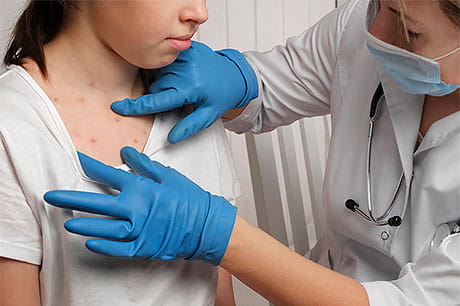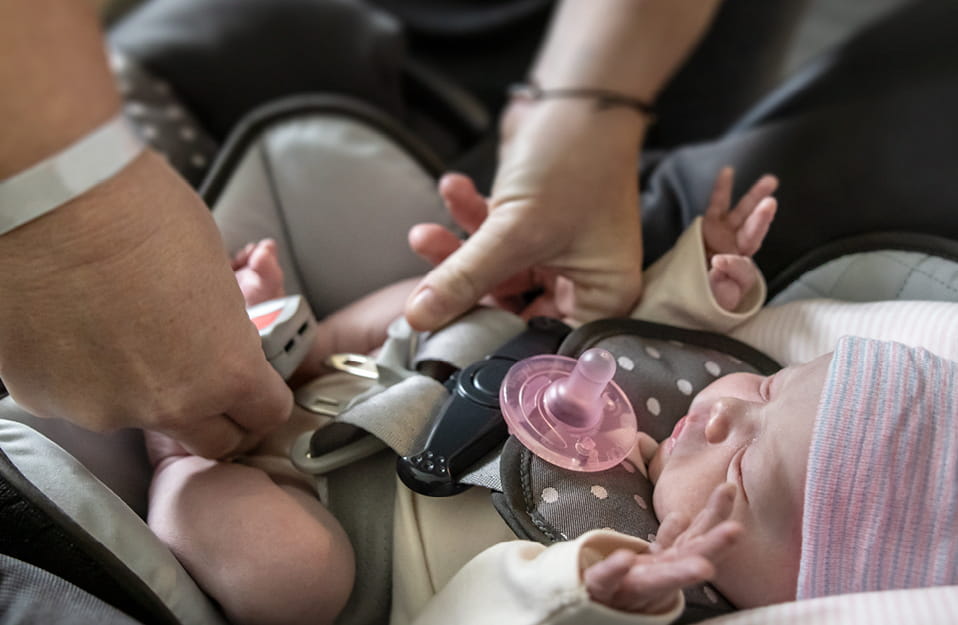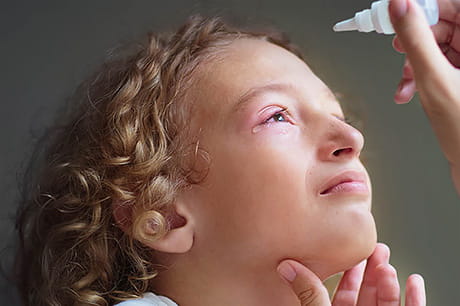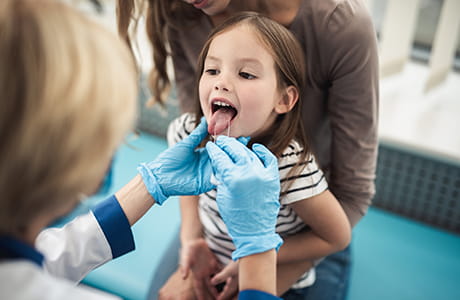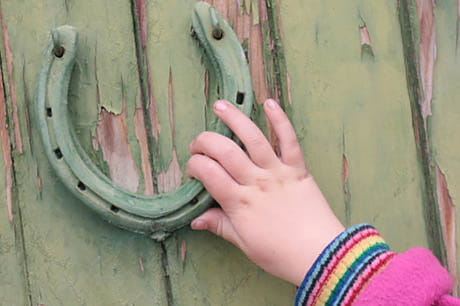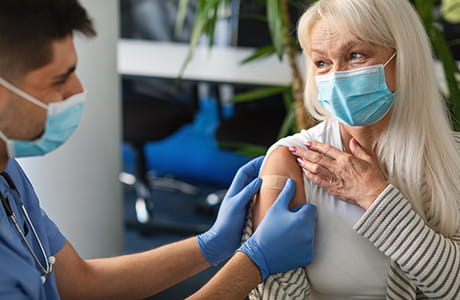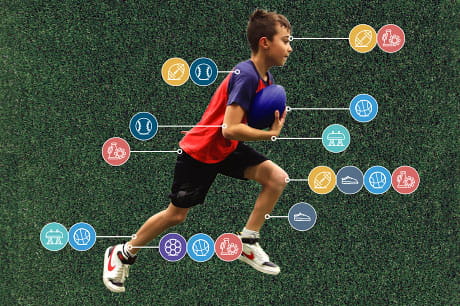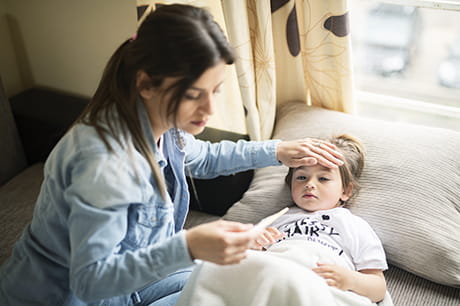Jump, stunt and tumble: The dangers of cheerleading
,
Don’t let the pompoms fool you
If you had to make a list of the top 20 most dangerous sports, what would make the list?
You would probably say hockey, lacrosse or football...but what about cheerleading?
Believe it or not, one study ranked cheerleading 16th on a list of sports with the highest number of injuries. Another recent study found that cheerleading is the most dangerous sport for females because of the high risk for concussions and “catastrophic” injuries, which are classified as injuries that result in long-term medical conditions, permanent disabilities or a shorter lifespan.
“Cheerleading has changed a lot in the last 30 years,” explained Dr. Hans Olsen, an orthopaedic surgeon at Geisinger Wyoming Valley Medical Center. “Parents may remember what cheerleading was like when they were in high school, where cheerleaders merely rooted for a team. But with the introduction of competitive cheerleading, the sport has gone from a sideline activity to an intense sport in its own right.”
While intense gymnastic and dance routines account for most of the injuries, there is another problem, too. Since many organizations still don’t consider cheerleading a sport, it doesn’t have to follow consistent safety regulations—which plays a role in the injury rate for cheerleaders.
As a result, more than 30,000 cheerleaders go to the hospital for cheerleading-related injuries every year.
Here are some of the most common dangers for cheerleaders.
Ankle injuries
Cheerleading routines, especially those in competitive cheerleading, include lots of running, jumping and flipping. Practicing these routines multiple times a week can put stress on kids’ ankles—leading to sprains and breaks. This is a problem for kids who are still growing; young children’s bones aren’t fully formed at the joints—making them more susceptible to injury.
On average, a sprain may heal in six weeks. But more serious injuries, such as a broken bone or torn ligament, may require surgery, which could sideline your cheerleader for months.
Knee injuries
Landing a tumbling pass or jumping down from a pyramid doesn’t just put stress on ankles, it affects your knees, too. If you don’t land squarely on your feet, you can strain and tear the ligaments in the knee, such as the anterior cruciate ligament (ACL), medial collateral ligament (MCL) or meniscus.
Minor ligament sprains can heal in as little as four weeks, but severe sprains and tears may require surgery. These injuries can take from six months to a year or more to fully recover and may have longer-term consequences.
Concussions and other head injuries
“Concussions are one of the most common injuries for cheerleaders,” said Dr. Olsen. “Some schools have actually seen more concussions on the cheerleading squads than football or soccer teams.”
Studies show that cheerleaders at the base of stunts are at the highest risk for concussions because other people can fall on them. Flyers, or those at the top of stunts, are also at risk for concussions, especially if they fall or are dropped.
Concussions are a serious injury that carry potential for long-term problems. If you suspect your child has a concussion, they should see a doctor immediately. Children should not return to playing sports until the concussion has completely healed and they’re cleared by a doctor.
Wrist injuries
When you fall, your first instinct is to catch yourself with your hands. While it protects your head, it can do some serious damage to your wrist. If you fall too hard on your wrist, you risk spraining, dislocating or breaking it.
While wrist injuries may not be season-ending, they can severely limit what activities your child can participate in. The healing time for wrist injuries may take weeks to months.
Preventing cheerleading injuries is possible
“As with most activities, prevention is the best medicine,” noted Dr. Olsen. “It’s better to be cautious and avoid risky stunts than to deal with the injuries.”
It’s important for your child to warm up before cheerleading practice, games and competition. Warm-ups can help loosen muscles and avoid injuries. Most injuries occur near the end of practice—when people are tired. When your child gets tired, they become less precise and more likely to make mistakes. Cheerleaders should not attempt a stunt if they are tired, injured or ill, as this may disrupt their focus and cause the stunt to be performed in an unsafe manner. Additionally, mats should always be used during practice sessions and as much as possible during competitions.
Ensuring your child trains with a qualified coach is also critical, and training with a certified coach is encouraged.
Encourage your child to say no to things they aren’t comfortable with. If a stunt feels too dangerous or if their teammates doesn’t take their safety seriously, they should talk to the coach.
Orthopaedic surgeon Hans Olsen, MD, sees patients at Geisinger Orthopaedics and Sports Medicine in Wilkes-Barre. To schedule an appointment with Dr. Olsen, call 800-275-6401 or visit Geisinger.org.
You would probably say hockey, lacrosse or football...but what about cheerleading?
Believe it or not, one study ranked cheerleading 16th on a list of sports with the highest number of injuries. Another recent study found that cheerleading is the most dangerous sport for females because of the high risk for concussions and “catastrophic” injuries, which are classified as injuries that result in long-term medical conditions, permanent disabilities or a shorter lifespan.
“Cheerleading has changed a lot in the last 30 years,” explained Dr. Hans Olsen, an orthopaedic surgeon at Geisinger Wyoming Valley Medical Center. “Parents may remember what cheerleading was like when they were in high school, where cheerleaders merely rooted for a team. But with the introduction of competitive cheerleading, the sport has gone from a sideline activity to an intense sport in its own right.”
While intense gymnastic and dance routines account for most of the injuries, there is another problem, too. Since many organizations still don’t consider cheerleading a sport, it doesn’t have to follow consistent safety regulations—which plays a role in the injury rate for cheerleaders.
As a result, more than 30,000 cheerleaders go to the hospital for cheerleading-related injuries every year.
Here are some of the most common dangers for cheerleaders.
Ankle injuries
Cheerleading routines, especially those in competitive cheerleading, include lots of running, jumping and flipping. Practicing these routines multiple times a week can put stress on kids’ ankles—leading to sprains and breaks. This is a problem for kids who are still growing; young children’s bones aren’t fully formed at the joints—making them more susceptible to injury.
On average, a sprain may heal in six weeks. But more serious injuries, such as a broken bone or torn ligament, may require surgery, which could sideline your cheerleader for months.
Knee injuries
Landing a tumbling pass or jumping down from a pyramid doesn’t just put stress on ankles, it affects your knees, too. If you don’t land squarely on your feet, you can strain and tear the ligaments in the knee, such as the anterior cruciate ligament (ACL), medial collateral ligament (MCL) or meniscus.
Minor ligament sprains can heal in as little as four weeks, but severe sprains and tears may require surgery. These injuries can take from six months to a year or more to fully recover and may have longer-term consequences.
Concussions and other head injuries
“Concussions are one of the most common injuries for cheerleaders,” said Dr. Olsen. “Some schools have actually seen more concussions on the cheerleading squads than football or soccer teams.”
Studies show that cheerleaders at the base of stunts are at the highest risk for concussions because other people can fall on them. Flyers, or those at the top of stunts, are also at risk for concussions, especially if they fall or are dropped.
Concussions are a serious injury that carry potential for long-term problems. If you suspect your child has a concussion, they should see a doctor immediately. Children should not return to playing sports until the concussion has completely healed and they’re cleared by a doctor.
Wrist injuries
When you fall, your first instinct is to catch yourself with your hands. While it protects your head, it can do some serious damage to your wrist. If you fall too hard on your wrist, you risk spraining, dislocating or breaking it.
While wrist injuries may not be season-ending, they can severely limit what activities your child can participate in. The healing time for wrist injuries may take weeks to months.
Preventing cheerleading injuries is possible
“As with most activities, prevention is the best medicine,” noted Dr. Olsen. “It’s better to be cautious and avoid risky stunts than to deal with the injuries.”
It’s important for your child to warm up before cheerleading practice, games and competition. Warm-ups can help loosen muscles and avoid injuries. Most injuries occur near the end of practice—when people are tired. When your child gets tired, they become less precise and more likely to make mistakes. Cheerleaders should not attempt a stunt if they are tired, injured or ill, as this may disrupt their focus and cause the stunt to be performed in an unsafe manner. Additionally, mats should always be used during practice sessions and as much as possible during competitions.
Ensuring your child trains with a qualified coach is also critical, and training with a certified coach is encouraged.
Encourage your child to say no to things they aren’t comfortable with. If a stunt feels too dangerous or if their teammates doesn’t take their safety seriously, they should talk to the coach.
Orthopaedic surgeon Hans Olsen, MD, sees patients at Geisinger Orthopaedics and Sports Medicine in Wilkes-Barre. To schedule an appointment with Dr. Olsen, call 800-275-6401 or visit Geisinger.org.

Content from General Links with modal content

